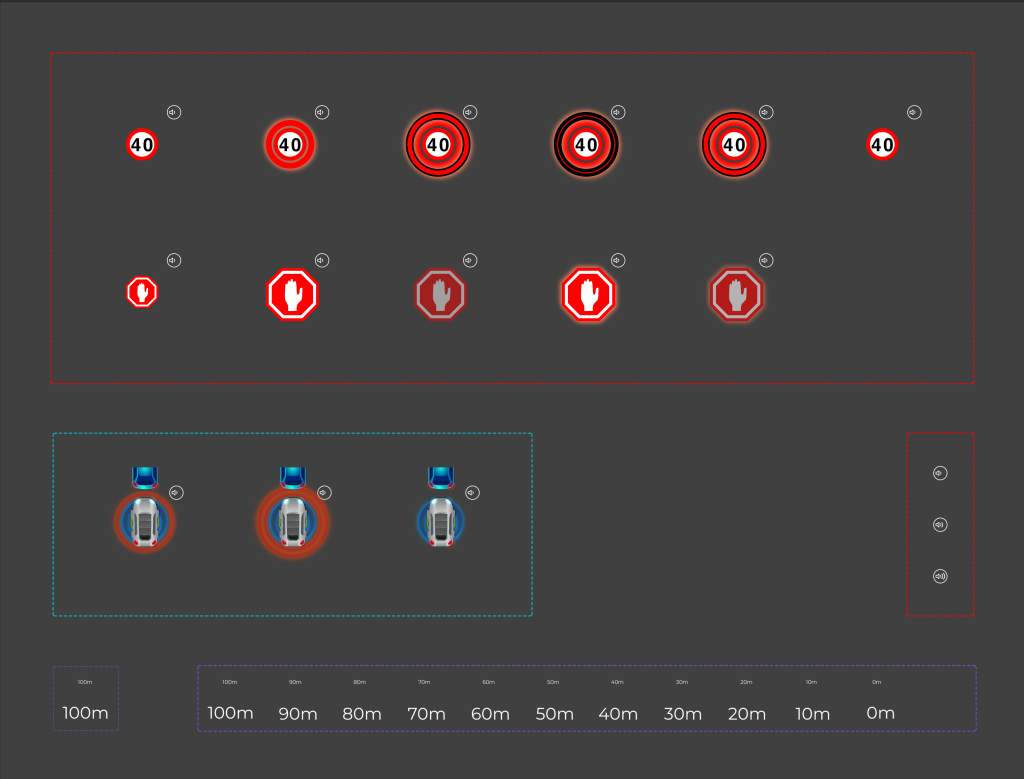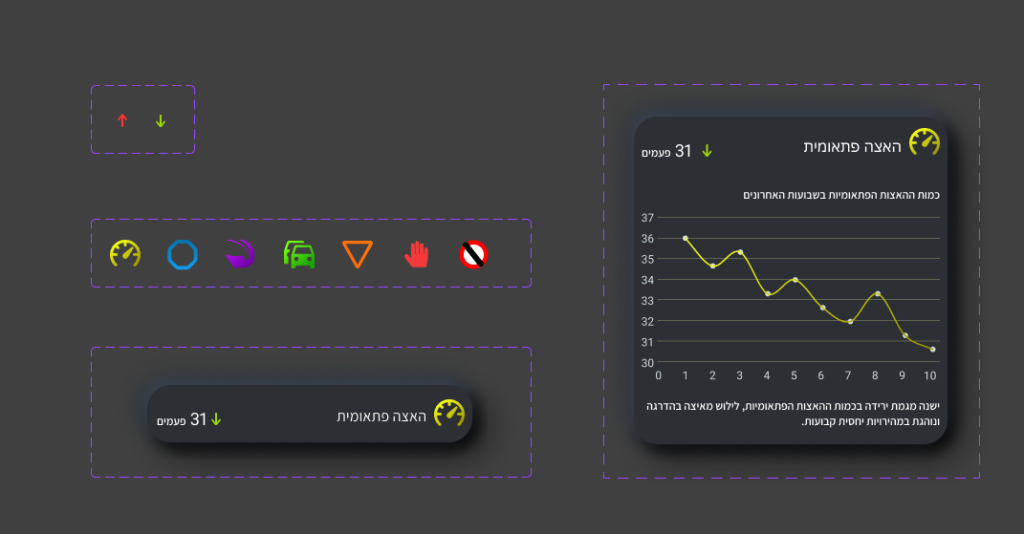
The safety of teenage drivers is a major concern for parents and guardians around the world.
According to statistics, teenage drivers are more likely to be involved in accidents due to their inexperience on the road
In order to address this issue, I came up with this mobile application to monitor and supervise teenage drivers, providing real-time feedback and analysis of their driving behaviors.
This UX case study explores the process and user experience of the application, from research and ideation to prototyping.
I hope to inspire other designers and developers to create meaningful and impactful solutions that address important social issues by sharing insights and findings from the design process.
Illustration by DALL-E2
Overview
According to CDC, teenagers between 16 to 19 years old have the highest rate of motor vehicle accidents compared to other age groups.
This application will chaperon the Teen driver, monitor their driving habits and minimalize the common risks of Teen drivers.
My role: UIUX Design
Overview
According to CDC, teenagers between 16 to 19 years old have the highest rate of motor vehicle accidents compared to other age groups.
This application will chaperon the Teen driver, monitor their driving habits and minimalize the common risks of Teen drivers.
My role: UIUX Design
Problem
In Israel a new driver is accompanied by an experienced driver for the first six months.
This, sometimes, is not enough to establish careful and responsible driving habits, however, the parents are left with no means of supervising the teen driver or knowing how their kid drives when they are not in the car.
Problem
In Israel a new driver is accompanied by an experienced driver for the first six months.
This, sometimes, is not enough to establish careful and responsible driving habits, however, the parents are left with no means of supervising the teen driver or knowing how their kid drives when they are not in the car.
Solution
The application imitates an experienced driver accompanying the teen driver aiming to establish good driving habits and preventing dangerous situations, such as driving under the influence of drugs or alcohol.
Solution
The application imitates an experienced driver accompanying the teen driver aiming to establish good driving habits and preventing dangerous situations, such as driving under the influence of drugs or alcohol.
Mapping open issues
- The installation of an application may evoke trust issues between parents and their kids, this could be bypassed by targeting insurance companies as the primary audience.
- Some similar apps are often abused, allowing the car owner/parent access to the vehicle’s location
One option for bypassing this issue is by allowing the car owner to determine section boundaries, without revealing actual location (i.e. The car is permitted within 30km from home, but the app will not show the car location within that radius)
An exception must be made, when the driver is in need of assistance, and he or she should be able to send their location via the application
- There is a fine line between mentoring and nagging, this must be taken into consideration – the App may need fine tuning for different users, however there must be a limit to the customization options, dictated by the insurance company.
- The App identifies the driver paired to the car, so there would have to be an Override option for cases such as car repair, or landing the car to someone without having them use the App. This is achieved through the App settings, allowing the owner to disable the App for a limited amount of time. This, however, might cause issues with the insurance company, to which I have not come up with a solution yet.
Competitors research
Similar Apps are focused on the following issues:
Speed – Excessive speed is at the root of more than 25% of fatal crashes among teenagers.
Seat Belt– Parents can program the system to prevent the transmission from shifting out of Park until the driver fastens their seatbelt.
Distractions – Some Apps allow parents an audio-system volume limiter or disable incoming messages.
Sudden Break – Monitoring and alarming the parents
Road Assistance – Providing support in cases of malfunction, flat tier etc.
Application used for car fleet management:
Real Time Alerts – Providing information such as driver’s fatigue, distractions, smoking and more
Market research conclusions
I have looked at three aspects:
Reliability
How much do the Application’s alerts truly imitated an experienced driver’s comments.
This is crucial in order for the parents to actually rely on the feedback received and act on it
Most Apps use alerts either in real time or as a drive summery (or postcard) I find this method less efficient then alerting the Teen driver in real time and preventing dangerous driving.
Usability
Is it possible to bypass the use of the application? If so, there is no educational value which will also diminish the customers and users trust.
With todays technology, we can identify patterns which makes it easier to recognize drunk or drugged situations, none of the Apps I’ve researched offer this service
Efficiency
Most Applications I’ve researched use SMS alerts or messaging via the application, but do not intervene in real time.
All the applications I’ve encountered use physical components installed either in the car itself or in the car key. This prevents creating an accurate teen driver profile, because of the other drivers using the car. Using a coded key does not guarantee the driver’s identity since people tend to just use the available key at a given moment.
How would it work?
When speaking to potential users (parents of teenage drivers), one response that came up was: No way my kid would install such an App.
This leads to the Onboarding script: once the Parent installs and pairs the application with the vehicle, the vehicle would only allow a registered driver to drive the car.
Another issue that came up was the reliability of the App, meaning, does it react at the right circumstances, does it over react?
Overreacting could lead to ignoring the alerts by both parents and Teen driver, a possible solution is to set the basic reactions to obeying traffic signs (speed limits, stop signs etc.) and allow customization for other features such as sudden acceleration, sudden breaks etc.
To answer this issue the App allows customizing some of the monitoring & alerts.
Design System
Warnings
The Warning Components are prototyped to blink or grow and sound an irritating sound

See how it works:
Statistics Components

Insights
The research for the application revealed ethical issues such as:
Privacy: Will it be possible to retrieve data from the application that will reveal traffic violations?
Parent/Child relations: The trust between the parent and the teenager – installing the application could be interpreted as a lack of trust in the young driver.
AI: What is the area of control given to the vehicle and how to avoid life-threatening situations that may be created by the application, for example, if the young driver is under the influence of alcohol but is in danger – should driving be allowed?
In my opinion, a deep examination of the above-mentioned issues is required, including consultation with professional parties in the relevant fields.
However, I see significant advantages in building the application and its implementation, such as reducing dangerous driving habits, lowering insurance costs for new drivers, and preventing driving under the influence of alcohol.